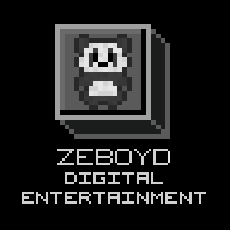Let’s talk about the program & item systems in the game since we didn’t show those off in the Playstation Experience demo.
Each shield (basically the armor in this game) comes with 1-6 programs pre-installed. These programs function just like abilities in battle with a few key differences. First, recharge abilities that replenish innate character abilities have no effect on programs (i.e. in most cases, you can only use each program once per battle). And two, each program has a stat requirement – if that character’s Hackitude stat isn’t high enough, the program is unusable.
As programs on each shield tend to share a theme, the program system essentially acts as a way to temporarily give each character a sub-class of new abilities. And in addition to the standard shields, you also get the Heroine Shield which only Alyssa can equip – this unique shield gives her access to special 2-character unite abilities with each other character.
Now on to items.
Items work similarly to abilities & programs, however they’re shared by the entire party. Once an item is equipped to one of your satchel slots (which you gain more of as you progress through the game), it can be used in battle. Items automatically recharge at the beginning of each battle so there’s no need to horde them.
To encourage more interesting item use, healing items aren’t going to be as common as they are in most RPGs. That’s not to say that they’ll be completely absent – we’ll most likely have a mid-level healing potion, as well as some rare late-game rewards like a Heal to Max Potion and a Revive item – but healing items will only make up a small percentage of total item types. Current plan is to start Alyssa off with 2 ailment-focused items – an item that inflicts Vulnerable (enemy takes double damage from the next hit) and an item that inflicts Poison (damage over time) – to emphasize the versatility of items and to show off the ailment system right from the start.
Next, an update on map counts!
Here are approximate map counts from our previous games. Note, on occasion, multiple maps will cover the same area (for example, before and after a major change has happened).
Penny Arcade’s On the Rain-Slick Precipice of Darkness 3 = 40 maps
Breath of Death VII: The Beginning = 54 maps
Cthulhu Saves the World = 101 maps
Penny Arcade’s On the Rain-Slick Precipice of Darkness 4 = 113 maps
Right now, we’re rapidly approaching 100 maps for Cosmic Star Heroine. By the time we’re done, the game should easily have more maps than any of our previous games. Creating the maps are by far the most time-consuming part of making any of our games so it’s exciting that we are starting to see the light at the end of the tunnel.


Not related, but I thought you might find this amusing after that polygon article you mentioned: http://www.p4rgaming.com/i-went-to-a-fallout-4-press-event-and-ignored-it-because-i-didnt-feel-like-writing-about-it/
Interesting take on items. I always liked how in the Penny arcade games your items were only limited for a single combat so you never felt like you had to stock them up. This idea that items are almost like skills makes it seem like building a strong team around programs and items will be very fun and rewarding.